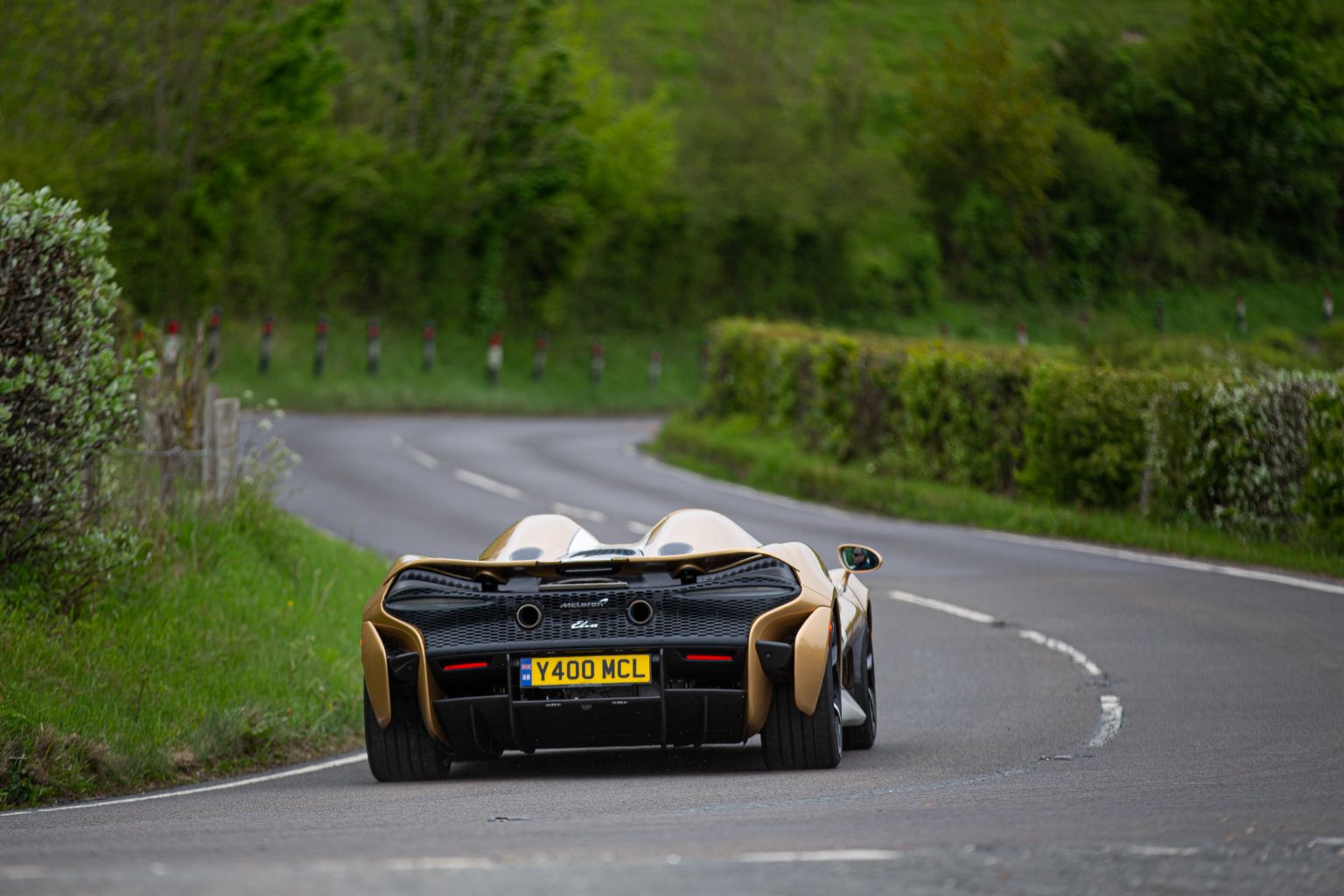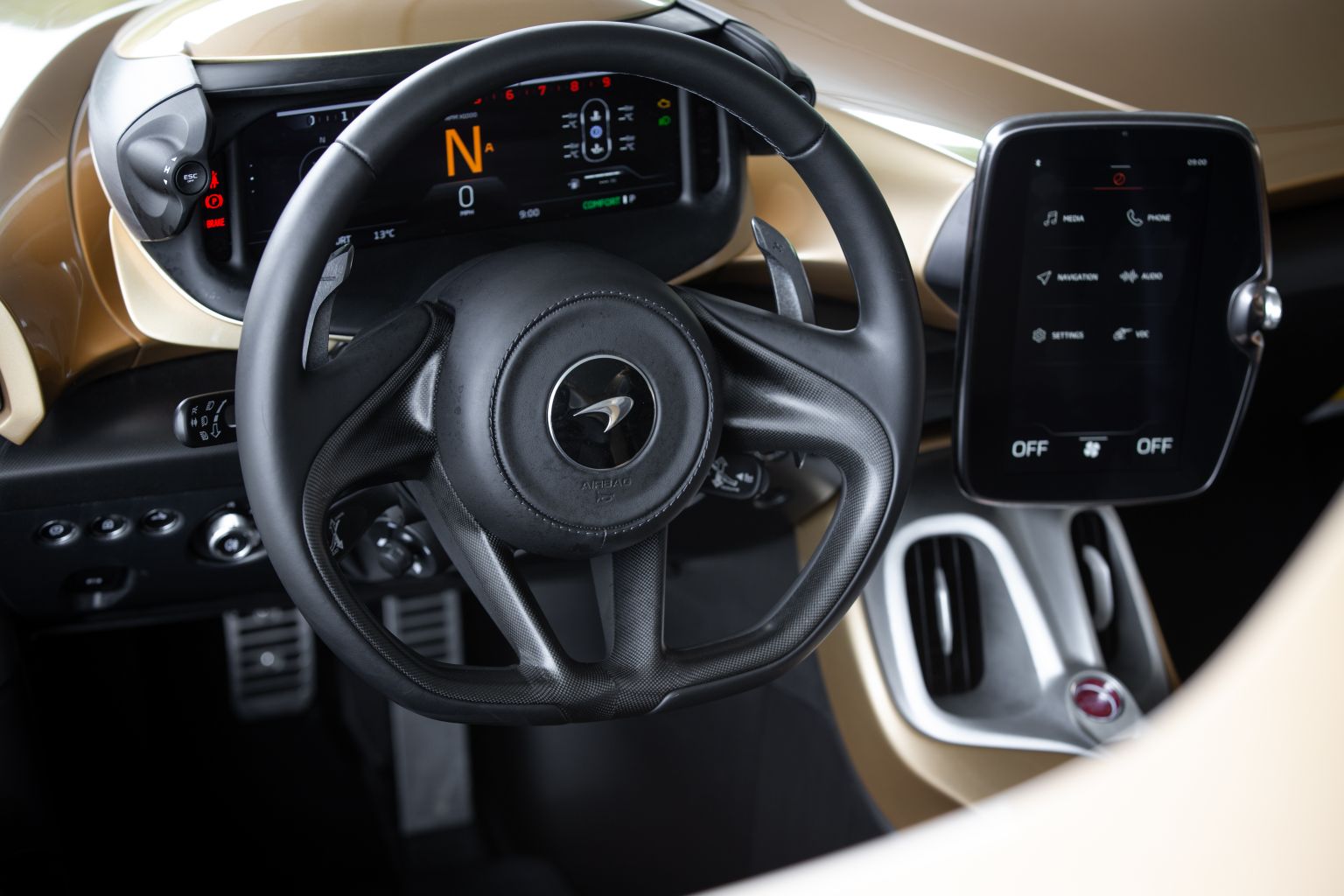Driven
Back to Library >McLaren Elva review
So is there anything else to see here? Plenty. Park your preconceptions and consider that the Elva is both lighter and more powerful than a Senna, the lightest McLaren indeed since the F1 25 years ago, and the most powerful not to benefit from a hybrid drive. But it is set up more like an LT than a Senna, so it works on road and track, and without huge downforce it doesn’t need ridiculous spring rates, so it rides well too.
The clever duct and flip up deflector do an amazing job of directing the wind over your head, but are they as good as a windscreen? Not even close. Which is why the car also comes with aero-sculpted helmets and ballistic sunglasses. Just as well, then, that you can trade it all for a screen, which I would in a heartbeat. I get the ‘exposed to the elements’ emotional argument, but really, I’d just rather not get blown about.

The kind of road on which you can stretch the legs of a car like the Elva doesn’t exist in the south east of England or, probably, the world, but you can say the same about all modern, proper supercars. So I cruised down to Goodwood, attempting to imagine it was Palm Springs, unimpressed by the lack of seat heaters, trying and failing not to feel too self-conscious. But when I got there and did a few laps, oh my goodness.

I cared not about the minimal downforce, more for its poise, balance, bullet-like acceleration and that you could chuck it at an apex like the world’s most sophisticated Caterham. I know what everyone is going to say about this car but I can report only as I find, and in those very particular circumstances I found the most thrilling McLaren I’ve driven since the F1. In that moment a car I’d doubted from the start, found its place. But it needs that screen.
McLaren Elva
Engine: 3994cc, V8, twin-turbo
Transmission: 7-speed dual clutch, RWD
Power: 804bhp @ 7500rpm
Torque: 590lb ft @ 5500rpm
Weight: 1269kg DIN
Power-to-weight ratio: 634bhp/tonne
0-62mph: 2.8 seconds
Top speed: 203mph
Price: £1,425,000
MPG: 23.7
Ti rating: 8/10



